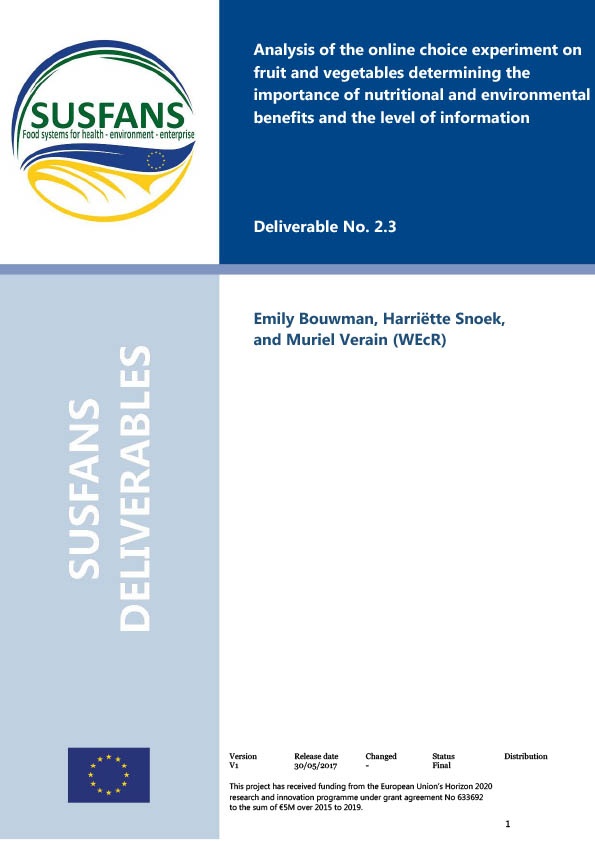Why consumers prefer both health and sustainability information - and why it should be done in a specific way
Consumers prefer combined information on health and sustainability benefits over only health or sustainability information. In addition, more specific information on health and sustainability is preferred over general information. This is the main outcome of SUSFANS' Deliverable D2.3 in which results of an online choice experiment conducted in The Netherlands, France and Czech Republic are shown. The aim was to analyze consumers’ sensitivity to product information on fruit and vegetable products.
A central approach of the paper by Emily Bouwman, Harriëtte Snoek and Muriel Verain of SUSFANS Partner Wageningen Economic Research was to show the effect of four different product attributes on consumers’ decision-making:
- communicating benefits in terms of health, sustainability or both,
- the level of specificity of the information (specific, medium, general),
- use and type of numeric information (percentage, grade, no number) and
- the price level, ranging from low and medium to high.
The effectiveness of price, grades and information
The researchers found that price was an important driver of choice in the experiment. Differences exist across the included fruit and vegetables products, across countries and across demographic groups.
A product with a lower price was chosen more often than a product with a higher price. Furthermore, a product with both sustainability and health information was chosen more often than a product with only sustainability or only health information. It is noticeable that health information had a larger effect on product choice than sustainability information.
The addition of a grade influenced product choice slightly more than no information. Adding a percentage on products did not make a difference to no information.
Overall, results show that for all products and in all countries, consumers prefer combined and more specific information. More specifically framed information had a larger effect on product choice than more general information.
Exception: Sustainable France
The results differed across countries, type of product and demographic characteristics of respondents, but overall a similar pattern was observed. One exception is that in France, as opposed to the other countries, communicating sustainability benefits had a larger effect on product choice than communicating health benefits.
Highly important for the development of policy interventions and for industry
But what does this mean? The results shows how consumers react to certain aspects of information on fruit and vegetable products. Thus, the type of information can influence product choice and, although the degree to which this is influenced can differ between countries, type of products, and demographic characteristics of respondents, similar results were found for all products, in all countries and for all consumers:
- combined information on health and sustainability benefits is preferred over only health or only sustainability information;
- specific information is preferred over general information;
- products with the highest prices are least preferred;
- the addition of numerical information has little or no effect.
These insights are valuable in the development of policy interventions and can also be used by industry to stimulate more healthy and sustainable food consumption.



Comments
Add new comment